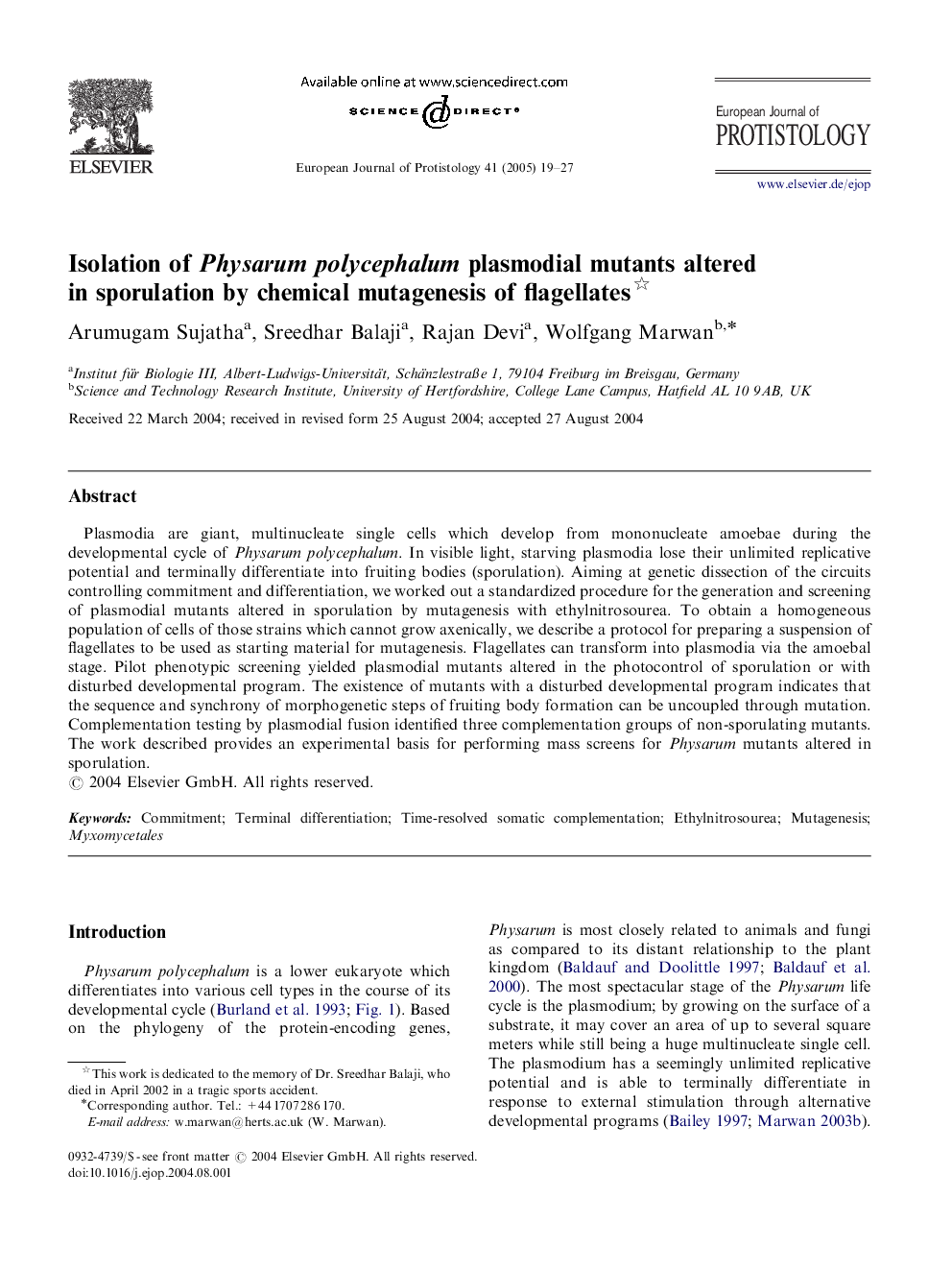| Article ID | Journal | Published Year | Pages | File Type |
|---|---|---|---|---|
| 9895516 | European Journal of Protistology | 2005 | 9 Pages |
Abstract
Plasmodia are giant, multinucleate single cells which develop from mononucleate amoebae during the developmental cycle of Physarum polycephalum. In visible light, starving plasmodia lose their unlimited replicative potential and terminally differentiate into fruiting bodies (sporulation). Aiming at genetic dissection of the circuits controlling commitment and differentiation, we worked out a standardized procedure for the generation and screening of plasmodial mutants altered in sporulation by mutagenesis with ethylnitrosourea. To obtain a homogeneous population of cells of those strains which cannot grow axenically, we describe a protocol for preparing a suspension of flagellates to be used as starting material for mutagenesis. Flagellates can transform into plasmodia via the amoebal stage. Pilot phenotypic screening yielded plasmodial mutants altered in the photocontrol of sporulation or with disturbed developmental program. The existence of mutants with a disturbed developmental program indicates that the sequence and synchrony of morphogenetic steps of fruiting body formation can be uncoupled through mutation. Complementation testing by plasmodial fusion identified three complementation groups of non-sporulating mutants. The work described provides an experimental basis for performing mass screens for Physarum mutants altered in sporulation.
Related Topics
Life Sciences
Agricultural and Biological Sciences
Agricultural and Biological Sciences (General)
Authors
Arumugam Sujatha, Sreedhar Balaji, Rajan Devi, Wolfgang Marwan,
